Header
Managing Vegetation for Safety and Reliability

aps
At APS, your safety is our number one priority. We want to work with you to make sure trees, shrubs and other greenery on your property are a safe distance from electrical equipment.

Routine maintenance
APS manages vegetation in Arizona neighborhoods on a routine basis. You may see us visit your neighborhood during a maintenance cycle depending upon how quickly certain plants grow. Cycle-based programs are considered proactive vegetation management. Inspectors look at several variables to determine if vegetation should be pruned or removed like growth rates, defects, species and site characteristics. Managing vegetation is important because trees too close to power lines could pose a fire risk.
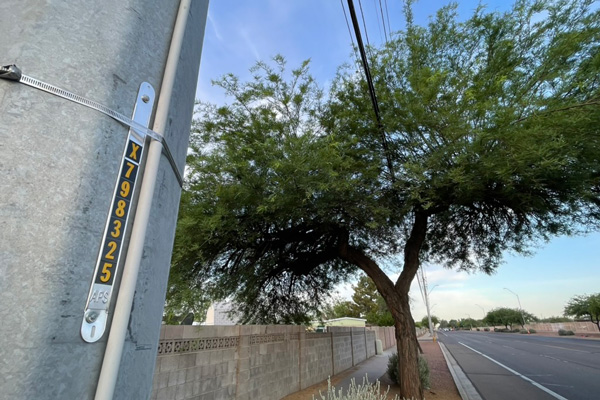
Non-routine maintenance
Some plants can grow faster than expected for various reasons, like environmental factors. When this happens, we may determine we need to prune or remove it before routine maintenance has been scheduled. There are many factors in the environment that can negatively impact vegetation. For example, drought can cause trees to be stressed and infested with insects. Vegetation can be hit by lightning during storms, or we may determine it is in the path of a wildfire. If circumstances like these result in the vegetation becoming a hazard, an APS-approved contractor may determine it should be pruned or removed to maintain the reliability and safety of the electric system before the next cycle.
Contact us to report any vegetation concerns near the power lines.

Call AZ811 Before You Dig
Digging where there are underground lines is not safe and can lead to power outages or even fatalities.
Call 811 from anywhere in Arizona at least two full working days before you plan to dig. Share the location and type of work you’re doing, and we will be notified. A specialist will be sent to mark the underground infrastructure so you can dig safely.
Right tree, right place
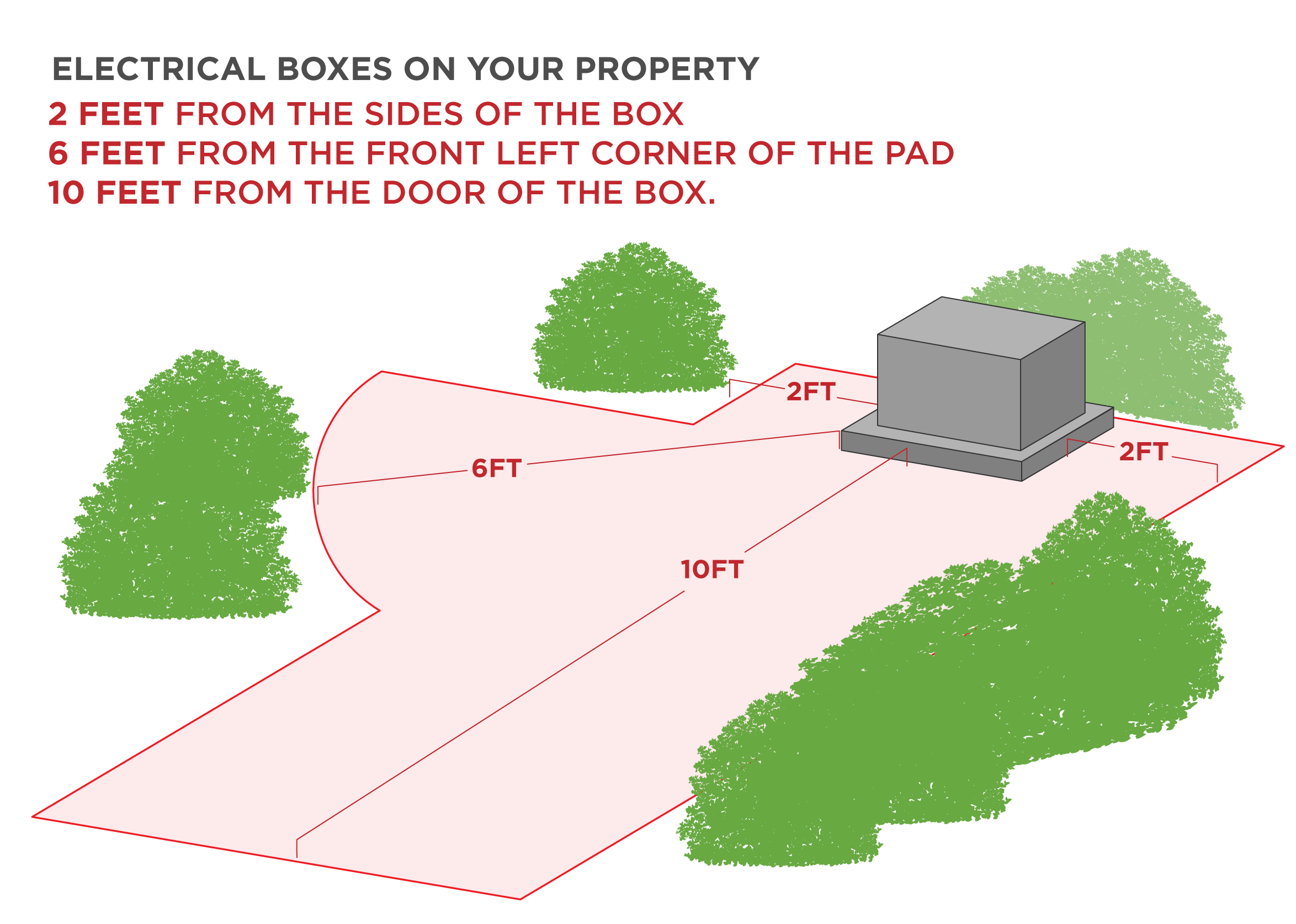
Things to consider when planting trees:
- Is this site suitable for plants or trees?
- Before you select and purchase plants or trees, confirm the area is the right place.
- Check to see if there are overhead power lines, poles, utility boxes or underground utilities in the potential planting area.
Electrical boxes on your Property
Make sure you do not block electrical boxes on your property. We need room to work safely and quickly to restore power if there is an outage. Do not place permanent structures, fences, shrubs, trees, sprinklers or irrigation systems within 10 feet of the door to the box, two feet from the sides of the box or six feet on the left-side corner of the pad.
Why type of utility lines are on your property?
There are different requirements and precautions that need to be considered depending on whether you have distribution or transmission power lines. Please contact us to see what overhead and underground lines are on your property.
Is this tree right for this site?
- After determining the area is suitable for planting, the next step is to determine what size the shrub or tree will be when it is fully grown.
- Shrubs and trees planted near overhead lines should not grow taller than 15 feet. You can always contact us to help determine what maximum height is suitable for your site.
- Once you are ready to pick out a tree, check with your local nursery to determine the maximum height and width when selecting the right tree for the right place.
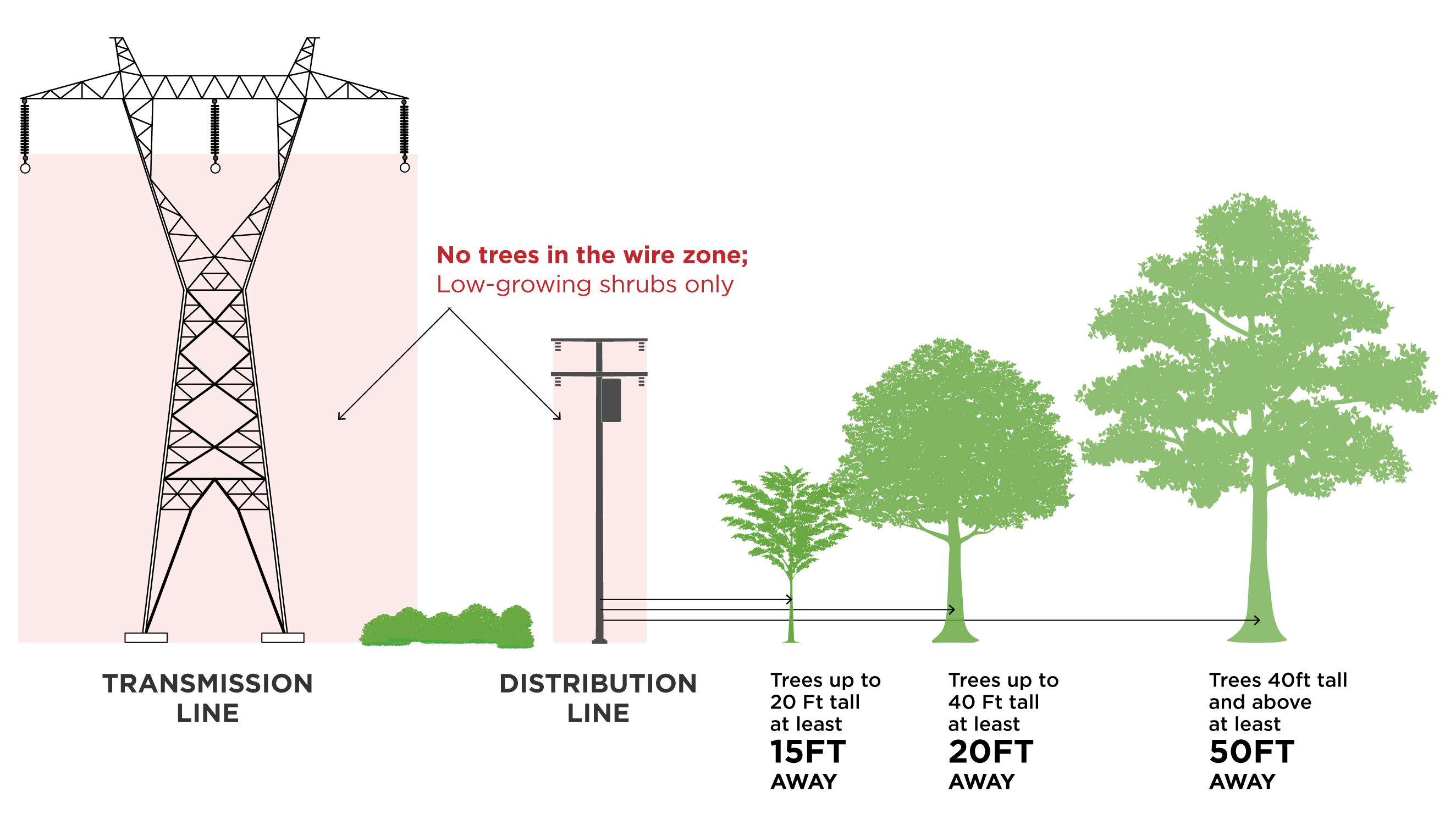
Safety prunes
To keep everyone safe, only an APS-approved contractor can trim trees near power lines. Please contact our Construction Helpline at (602) 371-6140 or the Customer Experience Center at (602) 371-7171 (metro Phoenix) or (800) 253-9405 (other areas) if you notice a tree too close to our power lines. We’ll send a forestry representative to assess the situation within 10 business days. We prune or remove trees, free of charge, that pose a risk to the high-voltage electrical distribution and transmission lines.
Examples of types of safety pruning around power lines
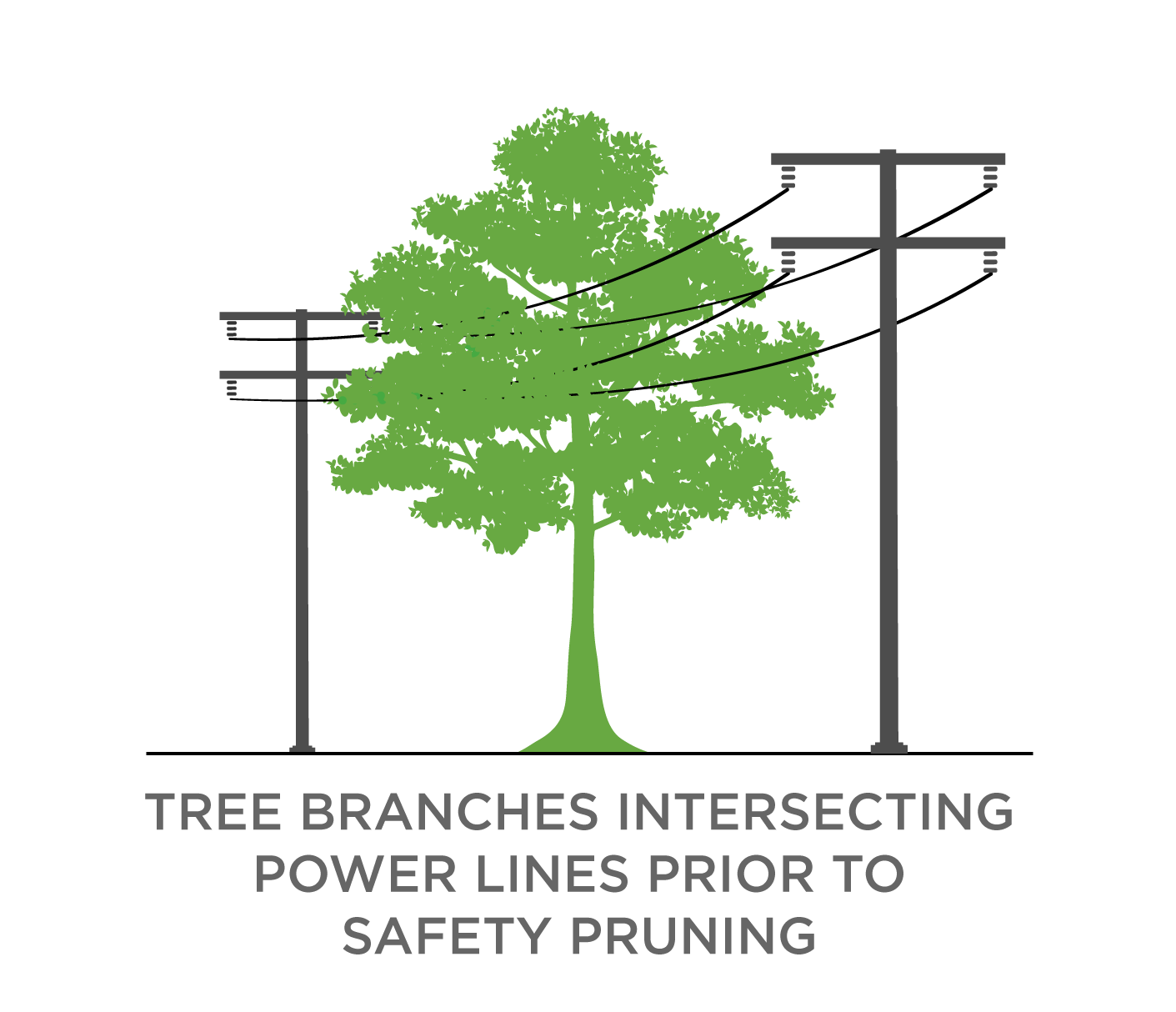

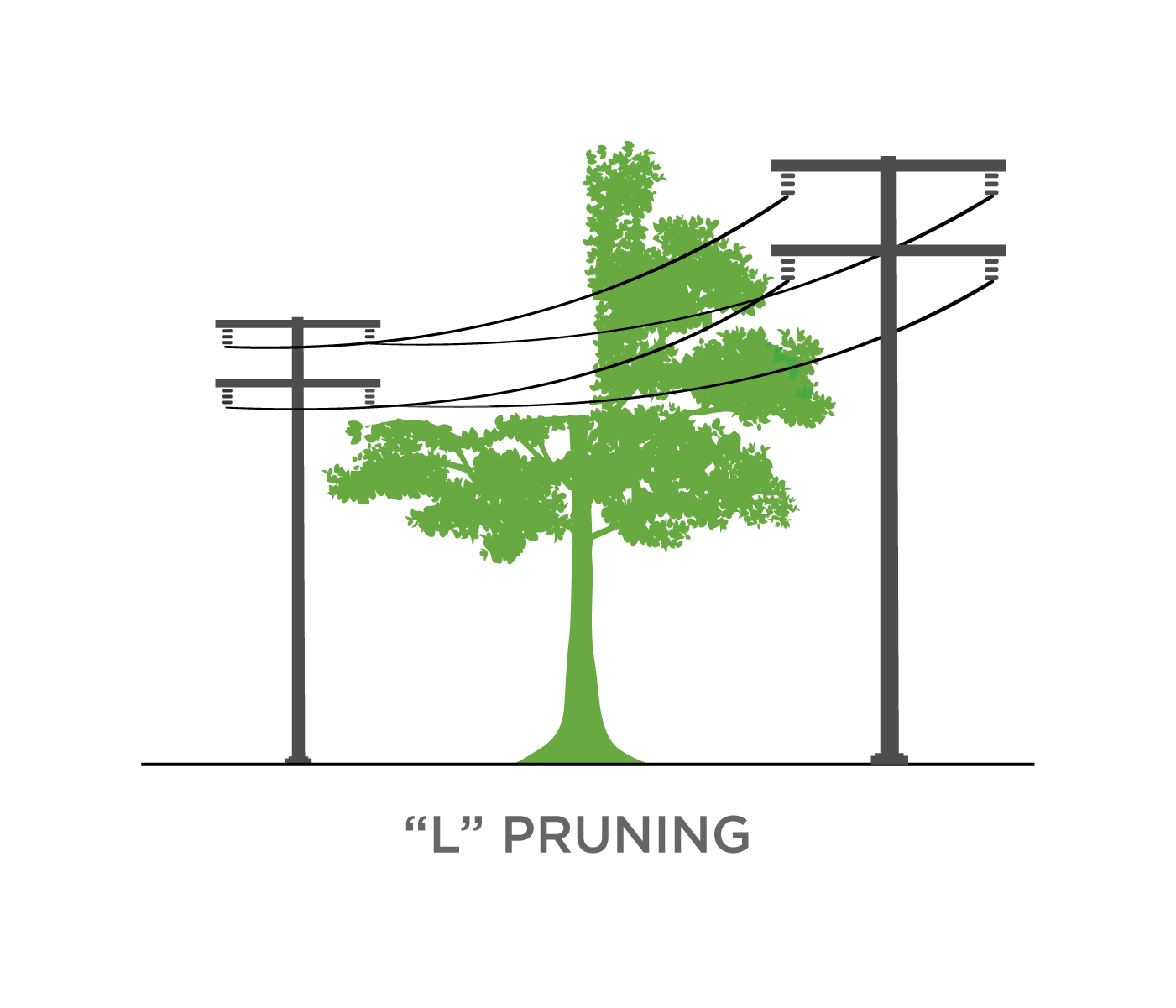

How we are being environmentally conscious
With more than 34,000 square miles in our service territory, proper land use and maintaining biodiversity are important components of our business decisions. We are committed to preserving our planet through environmental stewardship that includes considering the environmental impact and risk assessment of each decision we make, and complying with all environmental laws and regulation, going beyond compliance when appropriate. Our choices recognize the inherent value of the natural world, minimize our impacts on the environment and preserve natural resources. We are committed to providing reliable, affordable and clean energy while maintaining Arizona’s healthy environment.
Preventing fires by creating defensible space around power poles

We care about your safety and work year-round to minimize the risk of wildfire. To keep everyone in your community safe and improve power reliability, we visit communities to proactively create defensible space around poles, which means clearing and treating the trees and brush in the area around our power poles. A 10-foot radius is cleared around the poles at no cost to you. Approximately 0.04 oz.of low-volume liquid herbicide is applied on each pole for longer-lasting results, using a backpack or handheld sprayer.
These treatments are approved by the Environmental Protection Agency and the Arizona Department of Agriculture, Pest Management Division and comply with the International Wildland-Urban Interface Code. Additionally, all herbicides used adhere to required biological, environmental and cultural conservation measure. Please reach out to our Fire Mitigation Team at (928) 443-6643 if you have questions.

Did you know about the APS Free Wood Chip Program?
We will deliver free wood chips to those who fill out a request application. When you email us, please include your name, address and phone number.







